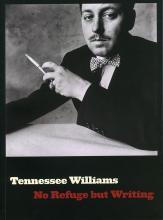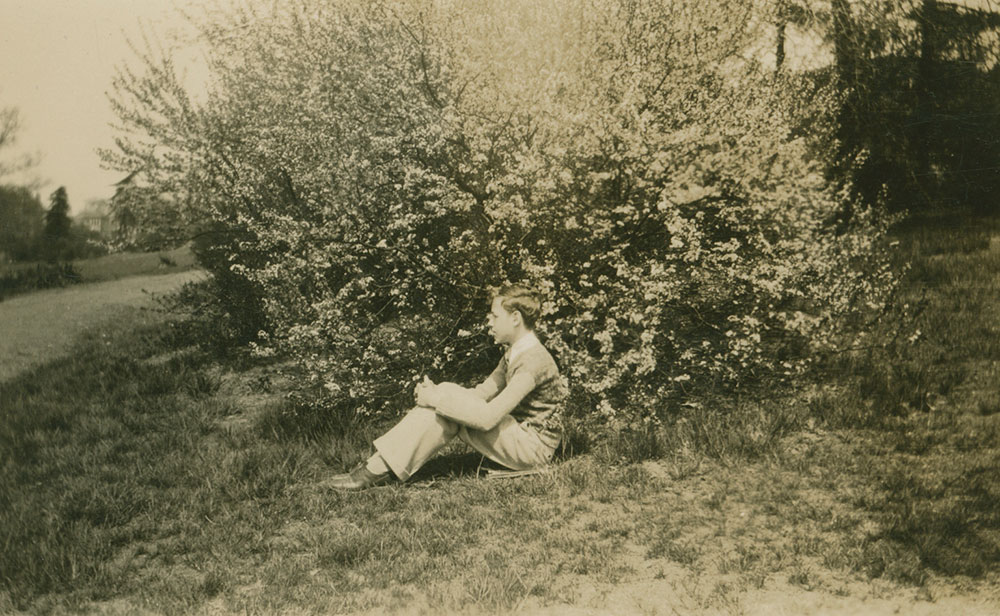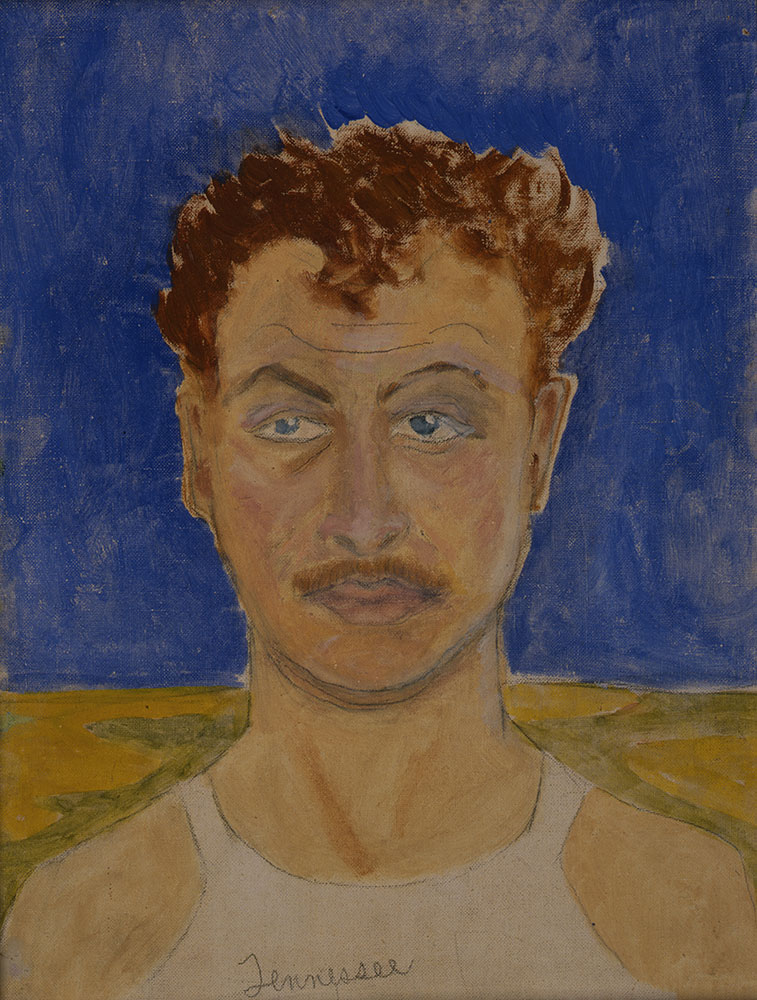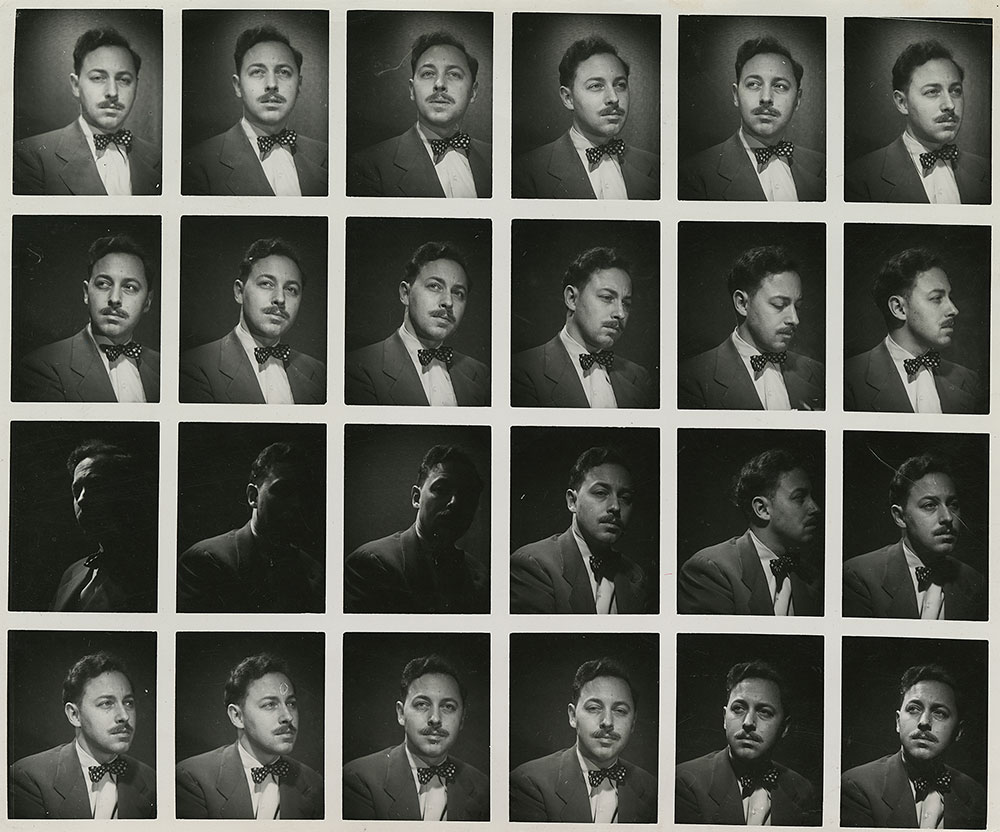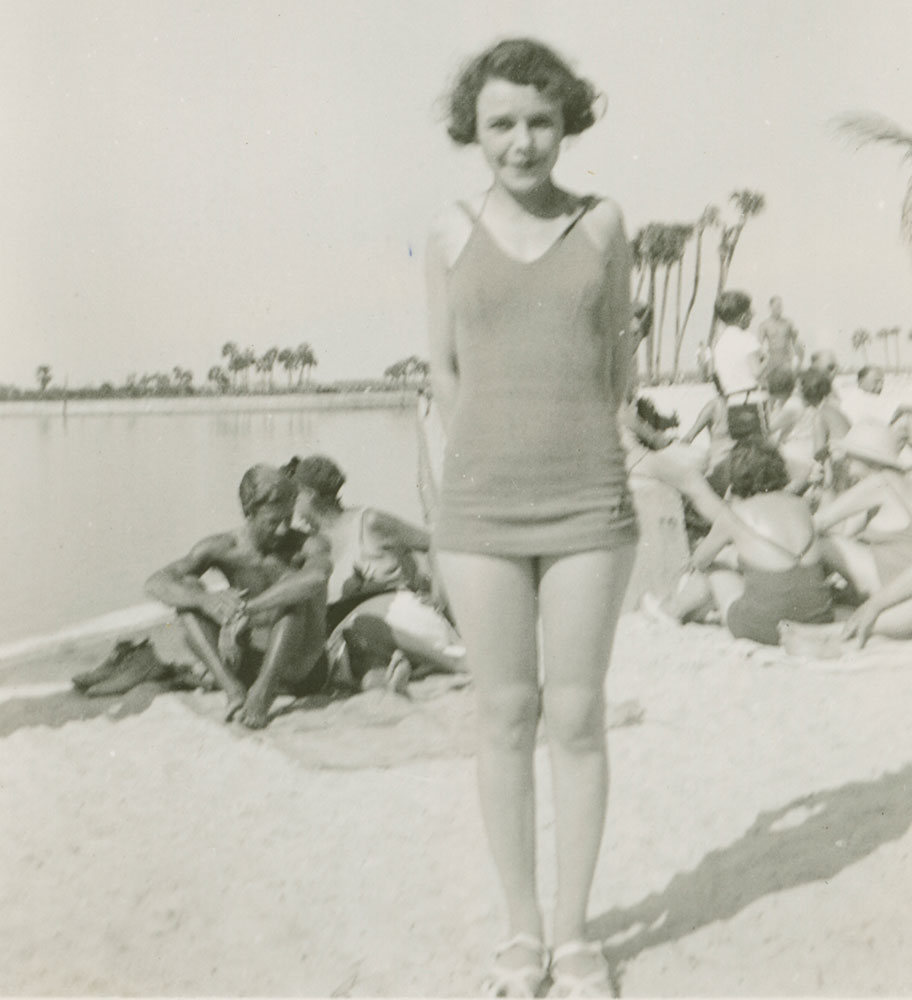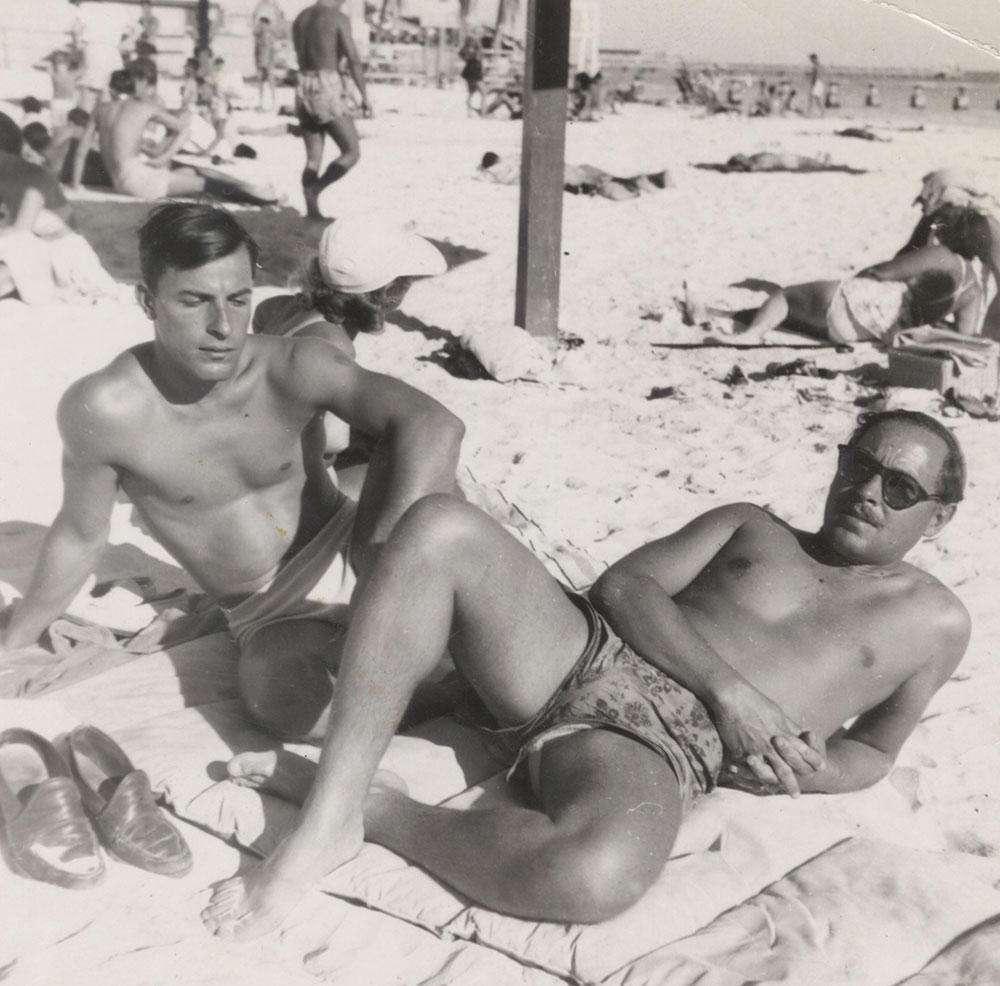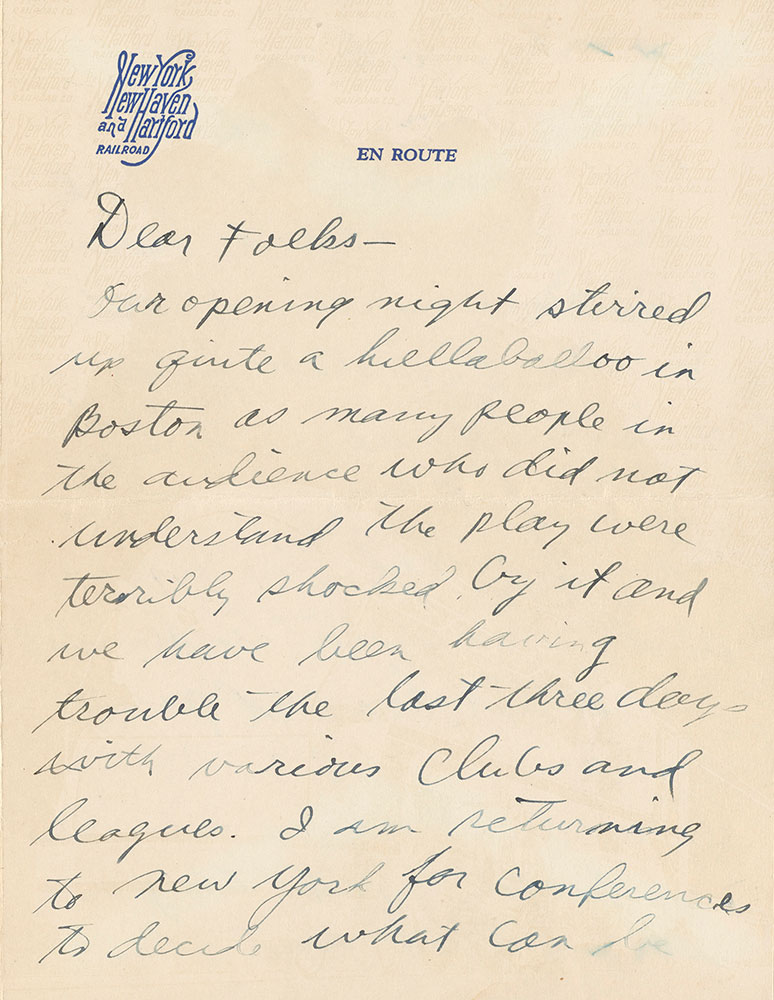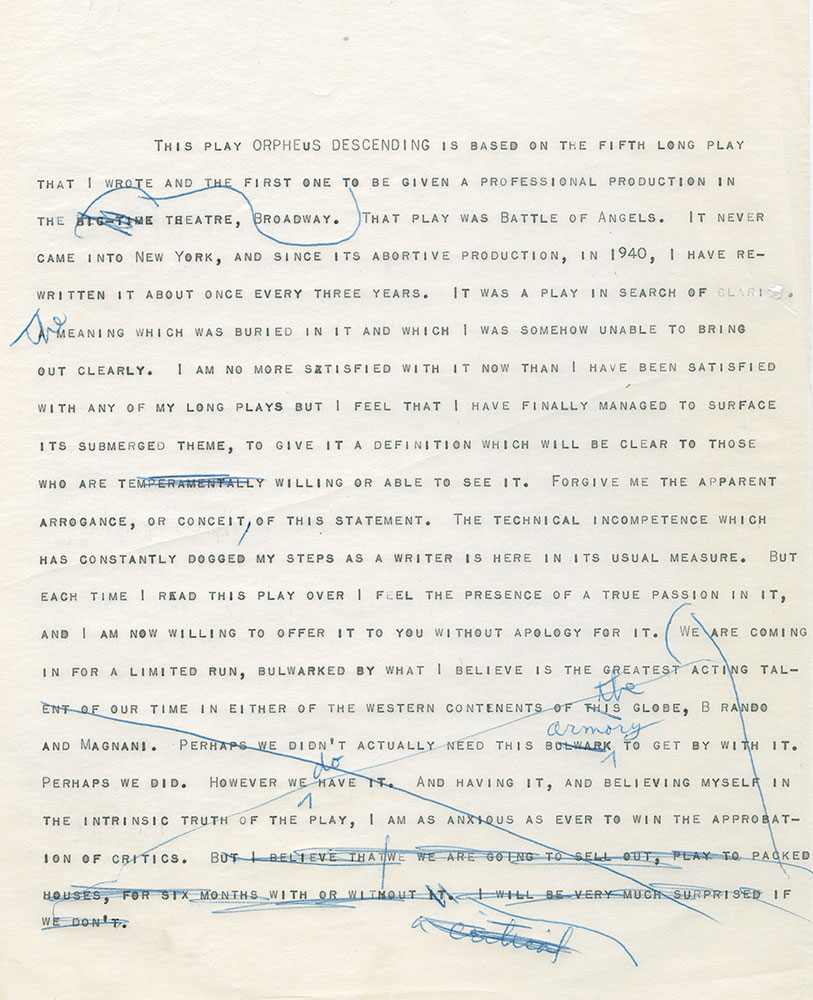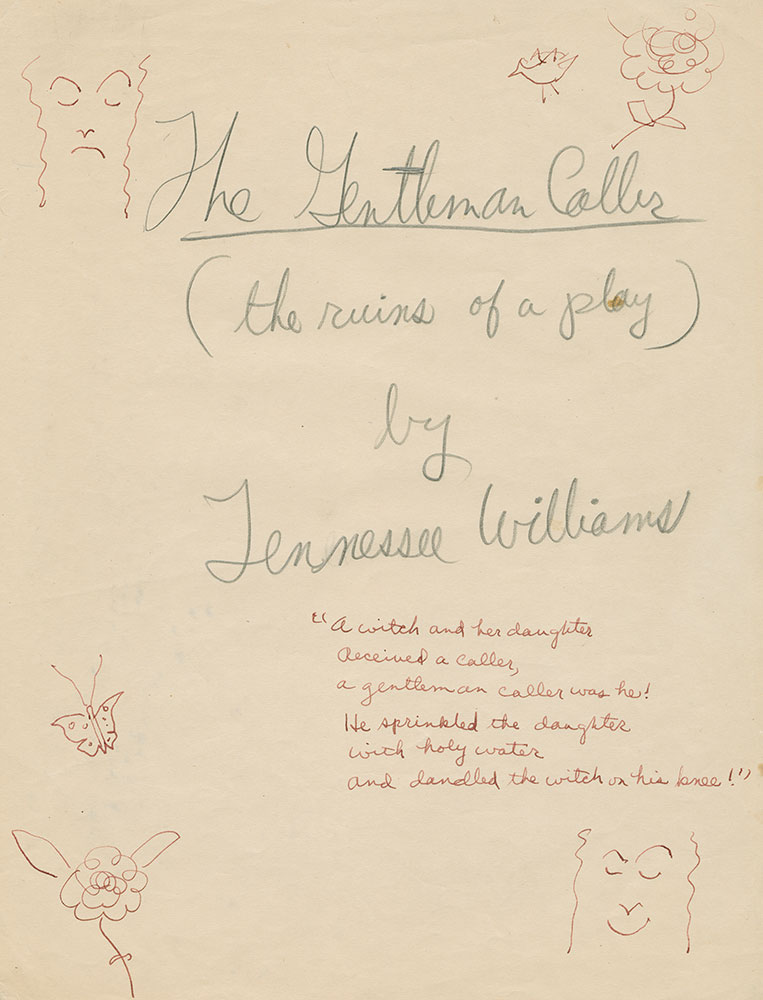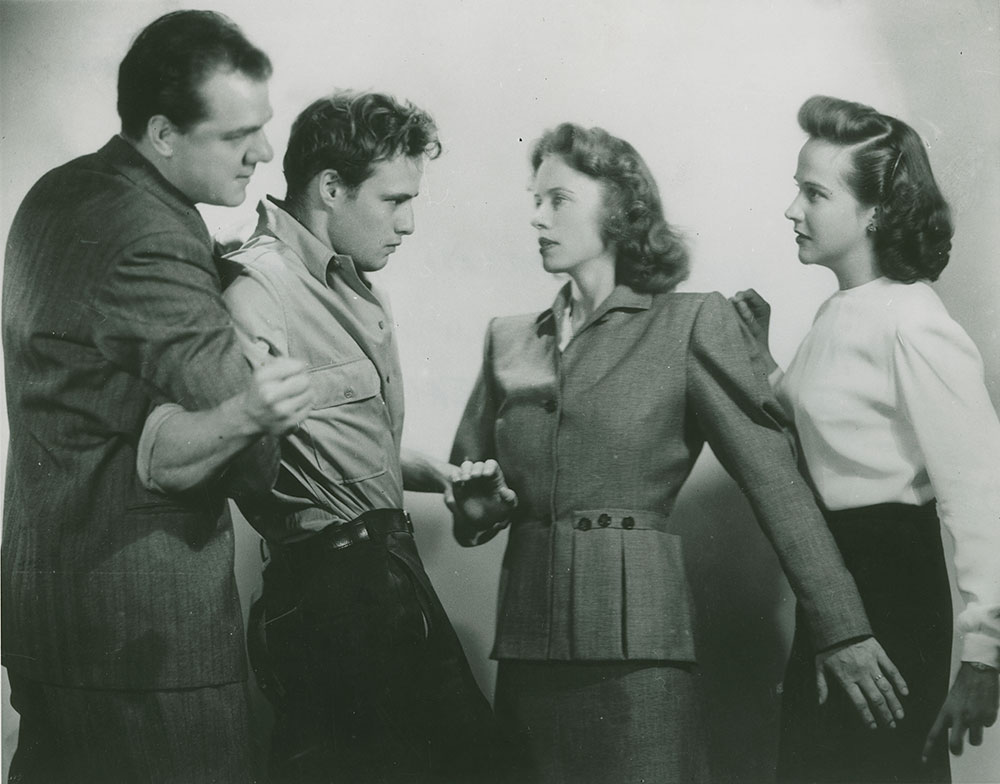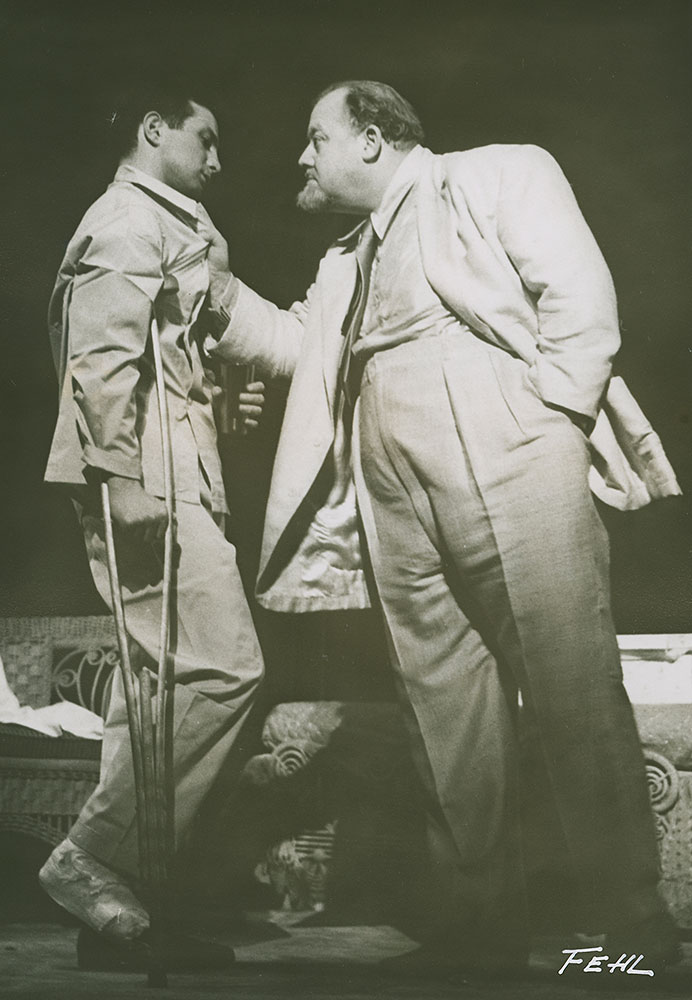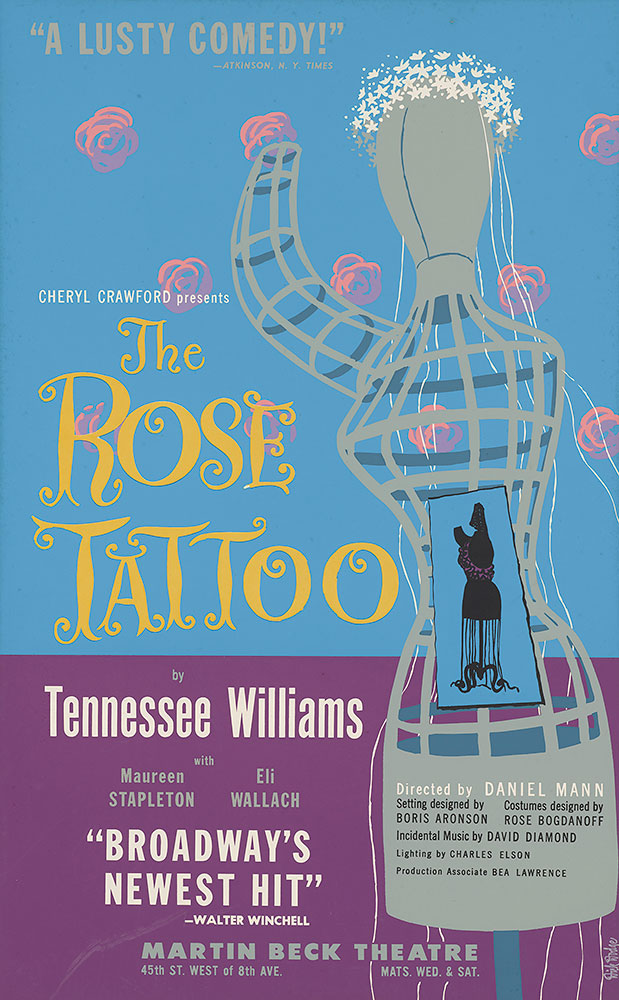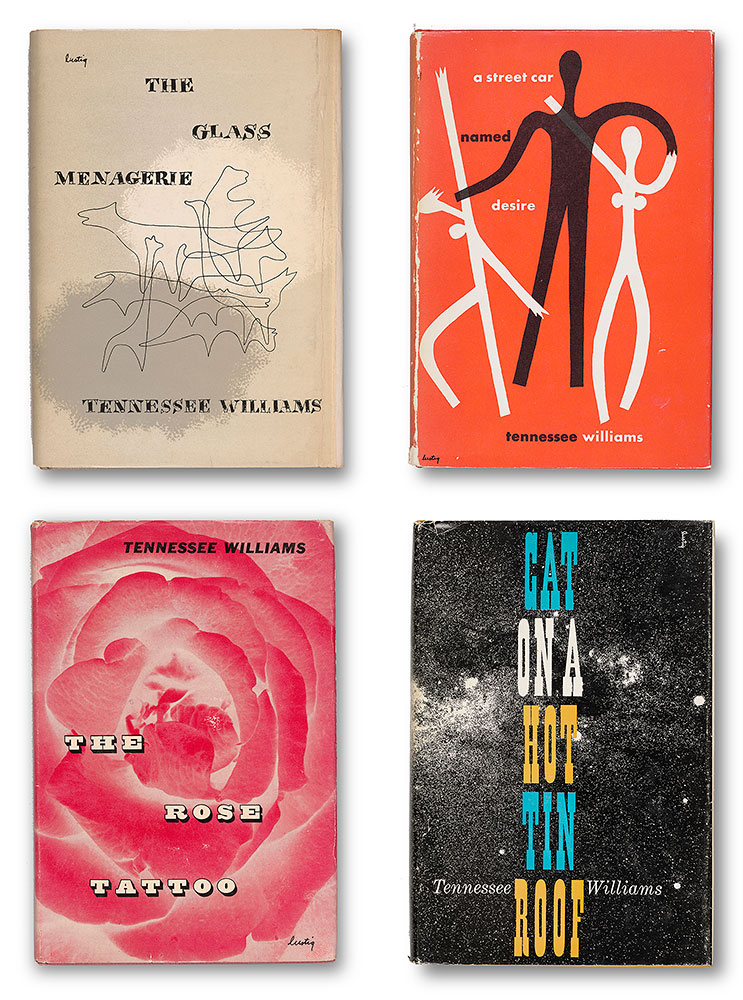The plays of Tennessee Williams (1911–1983) are intimate, confessional, and autobiographical. They are touchstones not only of American theatrical history but American literary history as well.
During the period 1939 to 1957, Williams composed such masterpieces as The Glass Menagerie, A Streetcar Named Desire, and Cat on a Hot Tin Roof, cementing his reputation as America’s most celebrated playwright. By 1955 he had earned two Pulitzer Prizes, three New York Drama Critics’ Circle Awards, and a Tony.
Williams embraced his celebrity even as he struggled in his private life with alcohol and drug addiction and a series of stormy relationships with lovers. Moreover, he was often at odds professionally with critics and censors concerned about the sexuality and other subject matter, then unconventional, explored in his plays. He found his safe haven in writing.
Opening February 2 and continuing through May 13, Tennessee Williams: No Refuge but Writing highlights the playwright’s creative process and his close involvement with the theatrical production of his works, as well as their reception and lasting impact. Uniting his original drafts, private diaries, and personal letters with paintings, photographs, production stills, and other objects, the exhibition tells the story of one man’s ongoing struggle for self-expression and how it forever changed the landscape of American drama.
Tennessee Williams: No Refuge but Writing is organized by the Morgan Library & Museum, New York, in collaboration with the Harry Ransom Center, The University of Texas at Austin. The exhibition is made possible with lead funding from an anonymous donor and generous support from Katharine J. Rayner, Alyce Williams Toonk, the Franklin Jasper Walls Lecture Fund, and the Charles E. Pierce, Jr. Fund for Exhibitions.
Tennessee Williams, Photograph by Irving Penn for Vogue, April 15, 1951 © Condé Nast.
